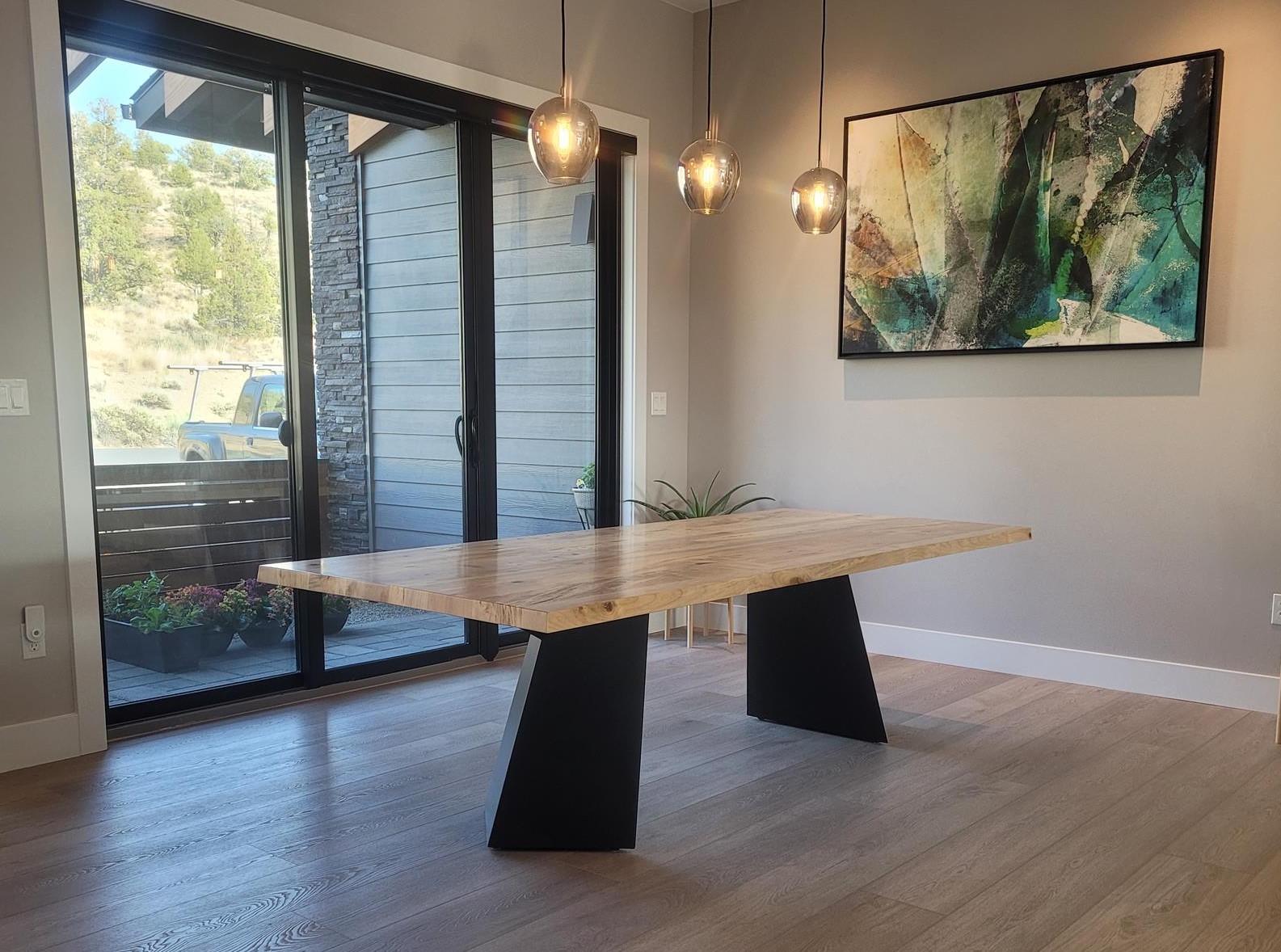Custom Dining Room Table Legs: A Stylish Addition to Any Home
Wiki Article
Picking the Perfect Dining Table: What Styles Work Best for Your Home?
Choosing the excellent dining table for your home can be a nuanced process that stabilizes aesthetics and functionality. To browse these selections effectively and find a table that genuinely enhances your home, take into consideration the following elements in detail.Examining Your Room
Evaluating the dimensions and design of your dining area is a critical initial step in selecting the ideal table. Begin by determining the size and width of the space, representing entrances, home windows, and various other building functions that might affect table positioning. This makes sure that your table not just fits yet additionally enables comfy activity around it.Take into consideration the variety of people you normally amuse. A table needs to accommodate your family's everyday demands while supplying sufficient adaptability for periodic visitors. Generally of thumb, assign a minimum of 24 inches of table width each to ensure a comfy eating experience.
It's likewise important to keep proper clearance around the table. Ideally, there ought to be at the very least 36 inches in between the table edge and walls or various other furnishings, allowing easy accessibility and activity. For areas where chairs with arms or additional storage space systems like buffets are included, increasing this clearance to 48 inches is suggested.
Lights and environment play significant duties also. Make certain that your table aligns with existing lights fixtures or strategy for appropriate lighting remedies. This extensive spatial assessment assurances that your dining table not just fits physically yet likewise harmonizes with your space's overall capability and aesthetic.
Popular Table Styles

Traditional table often feature luxuriant information, rounded legs, and rich wood finishes, stimulating a feeling of ageless beauty. They are ideal for homes with classic decor or those aiming to include a touch of class to their dining area.
Modern eating tables focus on simplicity and tidy lines, usually including materials like glass and metal. These tables are ideal for modern areas, offering a streamlined and minimalist look that complements minimal style philosophies.
Rustic eating tables, on the various other hand, emphasize all-natural materials and a handcrafted look - dining room table legs. They frequently include recovered wood and a troubled surface, developing a cozy and use this link inviting environment. These tables work well in farmhouse-style homes or those looking for a comfortable, organic feeling
Industrial dining tables incorporate resources such as metal and timber, frequently showcasing a practical aesthetic. This design is appropriate for loft spaces or metropolitan spaces, including a touch of rugged appeal and resilience to the eating experience.
Each style uses distinct benefits, making it important to pick one that aligns with your home's general layout and your personal choices.
Material Options
When picking a table, the option of product plays an important duty in identifying both the table's aesthetics and performance. Timber, steel, glass, and composite materials each deal one-of-a-kind benefits and difficulties, making it imperative to line up the product with your home's style and lifestyle requirements.Timber is a classic and versatile choice, readily available in selections such as oak, walnut, and mahogany. Known for its toughness and heat, timber complements both conventional and modern insides. It calls for normal upkeep to prevent scratches and warping.
Metal my explanation tables, typically crafted from stainless-steel, light weight aluminum, or functioned iron, are commended for their modern-day allure and effectiveness. They are particularly suited for industrial or minimalist setups yet can be vulnerable to damages and might really feel cool to the touch.
Glass eating tables bring an air of style and visibility, perfect for smaller sized areas as they produce an impression of more space. While easy to clean, glass can be susceptible to smudges and calls for mindful taking care of to stay clear of chips and fractures.
Composite materials, such as MDF and plywood, offer cost-effective and customizable solutions, though they might do not have the durability of natural materials. Picking the ideal product ensures your table is both a practical asset and a visual joy.
Sizes And Shape Considerations
After identifying the appropriate product for your eating table, the next factor to consider Discover More Here is selecting the appropriate shape and dimension to suit your area. Conversely, round tables cultivate a sense of affection and are excellent for smaller eating areas, motivating discussion by getting rid of edges and making everyone feel just as included.As a policy of thumb, designate at the very least 24 inches of table size per individual to make sure comfy dining. Furthermore, think about the table's clearance area: there ought to be at least 36 inches between the table edge and the walls or various other furnishings. Expanding tables use versatility if you frequently hold larger events, offering additional seating when required without inhabiting additional area daily.
Matching Your Design
Selecting an eating table that harmonizes with your existing decoration is pivotal in producing a natural and inviting area. A sleek, minimalist table with tidy lines is perfect for a contemporary home, while a vintage, luxuriant table suits an extra traditional setting.
If your decoration includes cozy tones and all-natural products, consider a wooden table to enhance the organic feel. On the other hand, a glass or steel table might be extra ideal in a space dominated by awesome colors and industrial aspects.
A rough-hewn, reclaimed timber table can include character to a rustic room, while a sleek marble surface area can boost a lavish eating area. A well-matched dining table not just improves visual allure yet additionally improves the general dining experience.

Final Thought
Selecting the perfect dining table requires cautious consideration of space, style, materials, form, and dimension. Typical tables enhance timeless insides with abundant wood finishes, while modern tables suit modern settings through glass and steel.Report this wiki page